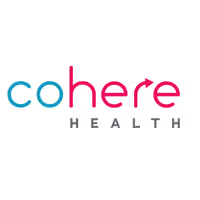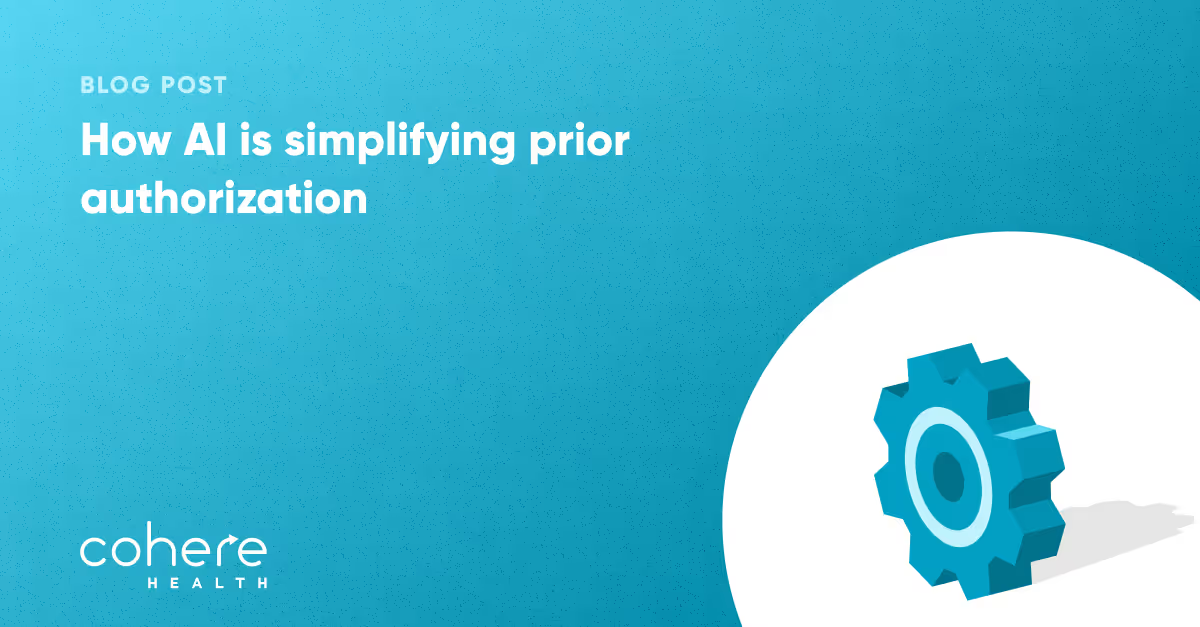The Secret to Reducing Physician Burden in Prior Authorization
Published:
March 20, 2023

As a physician, I have been taking care of patients for a very long time. When I think about the problems with legacy prior authorization, a very important consequence is how it delays care for patients.
Much of the prior authorization system was built on the fee-for-service mentality, where a physician is taking care of a single patient with a specific diagnosis and requesting approval from the health plan for a procedure or diagnostic test. It’s transactional and highly manual, and oftentimes conducted with outdated technology, such as fax or telephone.
Providers and their administrative staff may have to contact multiple vendors to obtain the authorization for those services, and lack of transparency around required documentation can lead to a painful and lengthy back-and-forth process that ultimately delays care. Provider burden concerning prior authorization is well-documented: an American Medical Association (AMA) survey found that up to 93% of physicians mentioned delays in care and their effect on care outcomes for patients.
Solutions that promote collaboration with physician partners improve prior authorization efficiency and care outcomes
Recent technological advancements make it possible to decrease the burden of prior authorization, while increasing collaborative capabilities. The secret to improving the relationship between providers and health plans is through increased collaboration:
- Streamline the process and build trust with providers
- Improve transparency around medical necessity criteria
- Coordinate with providers and encourage evidence-based quality care
Intelligent prior authorization solutions allow health plans to take regulatory compliance to the next level, instead of just digitizing fax intake and automating decisioning to meet shortened turnaround time requirements. Health plans can leverage isolated requests to enable collaborative management of the entire patient journey, and can promote earlier care interventions by applying clinical intelligence to transactional data. Transformed prior authorization can actually enable a shift from the old fee-for-service mentality to one that supports value-based care arrangements.
Reward high-value providers and drive quality patient care with green lighting
Despite the best intentions of all the individuals involved in a member’s clinical journey, oftentimes, it is confusing, uncoordinated, and prolonged. But we can make the experience more linear for providers and patients by digitizing intake–by using artificial intelligence (AI) to automate much of the decisioning process and speeding manual review where necessary.
The byproduct is a wealth of administrative data that can be leveraged to further enhance the process for high-value providers. Under older systems, all providers are treated the same, regardless of their performance record. However, with intelligent prior authorization, health plans can actually treat high-value providers differently. Green lighting can approve high-value providers at a higher rate and much faster thus making their authorization process easier. Unlike gold carding, in which the process is eliminated, green lighting still allows the health plan to collect data and ensure that inappropriate utilization does not increase. Green lighting can also be used for providers that are already taking risk, such as participation in value-based care arrangements or those that provide clinical data to registries.
I think of it like driving. If you’re a good driver, you generally follow the rules. If one day, you just go a few miles above the speed limit, as long as you come back down and continue to follow the rules moving forward, you’re not going to get penalized for that one mistake.
This data can also be used to actually improve care as well. Scorecards can be shared directly with providers and practices to help health plans work to address gaps in documentation or clinical education constructively. Health plans can proactively use the information to improve the process, reduce variation, and drive better care outcomes.
The result? A 92% provider satisfaction rating and net promoter score (NPS) of 65.
Include clinicians in medical necessity determinations with decisioning transparency and clinical nudges
As a physician, there’s nothing more frustrating than having to navigate each health plan’s prior authorization requirements. There’s no single place where a provider can go to find all the information they need. The lack of transparency contributes to friction with clinicians.
By breaking down that communication barrier, health plans can also improve denial rates and promote access to higher-quality care. Digitized intake adds an opportunity for instantaneous feedback impossible with older prior authorization processes because they rely heavily on fax. Two types of in-workflow notifications, called “nudges,” provide direction to requesting providers before an authorization is submitted.
- Administrative nudges alert providers if an authorization is not required, incomplete, or lacking sufficient clinical evidence to prove medical necessity
- Clinical nudges use AI and machine learning to leverage administrative data and a patient’s longitudinal health record to suggest evidence-based care alternatives
This real-time feedback is critical to improving turnaround times because it reduces the volume of denials.
Nudging is also an opportunity for the health plan to collaborate with physicians on approving evidence-based care and reducing care variation. Legacy prior authorization processes are time-consuming and oftentimes non-clinical staff are enlisted to fill out clinical assessment questions on a physician’s behalf. However, the advanced decisioning engine of intelligent prior authorization reimagines this routine data entry into moments of education and influence. Capitalizing on the opportunity to educate providers, automated decisioning is enhanced by incorporating care guidelines from leading medical societies into nudge recommendations, keeping providers on the cutting edge of clinical practice.
For example, I remember a case we were reviewing in which we received a request for a procedure, but the request didn’t include imaging results. By nudging the provider to include the results of an MRI, something they hadn’t ordered at that point, we took advantage of an opportunity to educate the provider on a care pathway that was new. In fact, when they got the results back from the MRI, it altered what procedure they ended up suggesting for the patient. It was an opportunity to use prior authorization as a lever to reduce care variation.
The result? 35% reduction in medically unnecessary procedures.

Support physicians’ clinical decisions by using prior authorization data to trigger care pathways
Another way to leverage administrative data is by creating longitudinal patient records, which enable patient cohorting around clinical diagnoses and other attributes. When a service request is received, it can be evaluated from the context of the patient’s record–what has been previously authorized, as well as what might be appropriate next steps in treatment. The real benefit is an opportunity to impact care and drive better outcomes for patients.
By the time a patient is in a surgeon’s office scheduling surgery, it may be too late to intervene, if needed. However, prior to being scheduled for surgery, the patient most likely had imaging performed, and a request for prior authorization for that diagnostic test would have been previously submitted. Because of this data, health plans have an opportunity to share information with providers that patients with similar conditions and indicators have seen improved outcomes with a potentially less invasive intervention, such as a comprehensive care management program. Because the patient receives treatment and preventative care earlier in their journey, providers and patients can benefit.
Similarly, if a provider is ordering a test and clinical intelligence determines that a particular patient is in a cohort that responds well to a specific care episode, it’s possible to enable episodic authorizations, which provide authorization of multiple appropriate services at the same time. Intelligent prior authorization shifts away from the age-old focus of fee-for-service and lets health plans think of care in terms of care episodes and total cost of care. It benefits all parties to have providers submit once for a group of procedures that require processing and approve them all at once.
The result? 12% shift in site-of-service from inpatient to outpatient settings
Health plans and their provider partners share a common interest in avoiding prior authorization denials
Fostering a collaborative relationship with physicians helps establish transparency and trust between health plans and provider partners, and reduces physician abrasion associated with prior authorizations. Ultimately, health plans and clinicians share a common interest in the prior authorization process: providing appropriate care for patients. It is a poor experience for all parties when a request is denied: increased administrative costs for health plans, wasted time and effort for clinicians, and delays and confusion for patients.
Health plans should capitalize on their common interest of limiting denials with clinician partners and take an active approach to working collaboratively. By proactively leveraging this “secret,” they will reap administrative benefits and drive better care outcomes as an added benefit.
Hear from one of our clients: Lisa Stephens, Senior Vice President of Operations at Humana, shares about our partnership and real results in this webinar.
Available For Download
Stay ahead with expert insights on transforming utilization management and payment integrity—delivered straight to your inbox.

